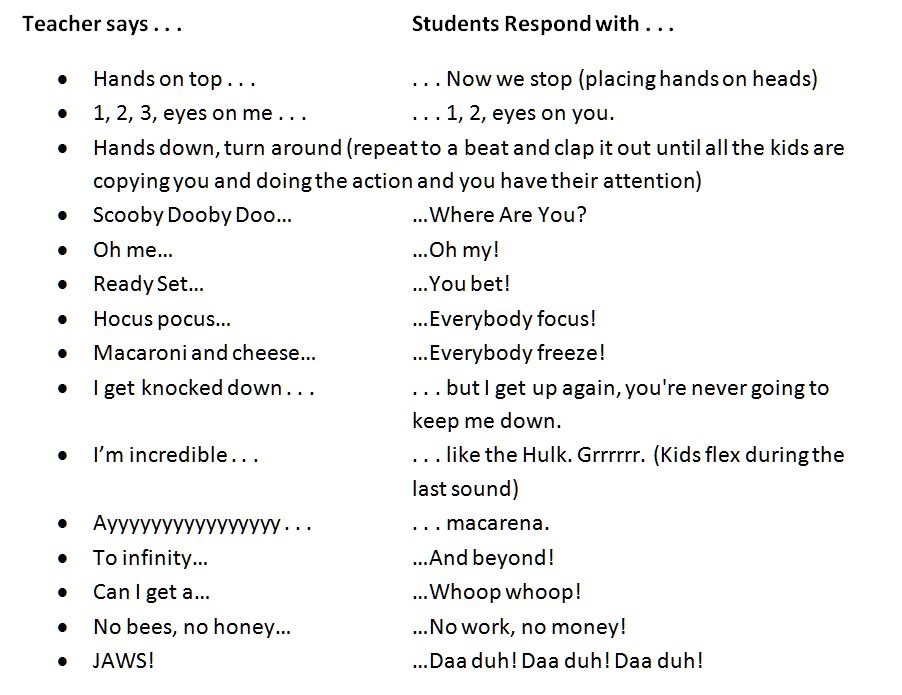13th September 2016
My class is so loud!
It’s Friday afternoon and your class of young learners (or adults!) are bouncing off the walls, not paying attention and talking away amongst themselves. What do you do? Raise your voice and try to shout over them? Many of us can attest to the fact that raising your voice never gets you anywhere, ESPECIALLY on a Friday afternoon. So what can you do instead?
To calm a rowdy, noisy class, it’s important to engage them. Just like a hyper-stimulated toddler on overdrive, noisy classes are usually those that are over-tired. Tired of studying, tired of English, tired of school… whatever their reason, they’re tired and need a break. Engaging them in activities that are calming and soothing will help to end your week on a high and leave them happier and more relaxed.
1. Will changing the lighting in your classroom work?
Change the lighting by dimming it if possible. Play relaxing music and allow only a few students at a time to enter the room when they come in from lunch. Let them get seated quietly first, before allowing a few more in. This will signal to the class that they must enter the room in a specific way. If any are too rowdy, ask them to wait until they are quiet before they enter. Make this a ritual and it will engender a Pavlovian response as they will automatically begin to associate these actions with calming down.
2. Practising effective breathing with children can keep them focused
Do some calming yoga stretches or deep breathing exercises to get students centred and focused again. It’s amazing how a few deep breaths will calm learners right down.
3. Story-telling with children gives them a chance to unwind
Get students sitting on the floor if possible, and read them an interesting story which connects to something you’ve recently taught. Again, ambience (dim lighting and soothing music in the background) adds to the atmosphere. Choose an engaging chapter or short story, or allow students input on what they want to hear because they’ll likely be more interested and focused. Give them a chance to just enjoy the story without too many demands (daydreaming is all part and parcel of the storytelling experience). Let them doodle or draw while you read and get them to display their work at the end of class.
4. Reading / writing corners give students choices
Put students in different groups for quiet independent reading and writing time and swap them after 20-30 minutes. If there is a book corner, make it comfortable and cosy with cushions and a carpet (remind them to take their shoes off before they step onto the carpet is a good physical cue to get them to be quieter). Keep writing interesting by getting them to do a comic strip or creative writing text of their choice. Give them a variety of story starter or ending prompts – again relate it to something you’ve taught recently to recycle their vocabulary and grammar.
5. Does playing games work?
Quiet activities should not always be paper-based. Allowing students to choose quiet board / word games to play in groups of two and three will engage and motivate but also keep students focused on the activity in hand. Give them freedom to move to different games if they finish or get bored early. By giving them this freedom, they will remain focused and engaged, but at a maintainable noise level. Noise levels are easier to manage if learners are in small groups.
6. Guided visualisations are an effective way to start!
Encourage students to close their eyes, rest their heads on their desk and focus on the on the music, as you guide them through a mental journey. Make sure you keep the ambience relaxing, with quiet music and dim lighting in the background. Encourage them to listen deeply, by speaking slowly, quietly and calmly, allowing a lot of pauses for them to process the language and story. As you end the visualisation, fade the music out gently to bring them back round to the class. You may want to group the learners in small groups and have them discuss what they felt, experienced, imagined and board any answers / interesting vocabulary. Perhaps you would like them to remain quiet and draw what they saw with a view to writing a story about it and then discuss their work.
7. Counting games help to recycle key language
Ask the whole class to stand in a circle and explain that as a class, they will have to listen carefully to each other. Explain that they will count out loud from 1 to 20 individually (it must be at random!) but if two people call out the same number at the same time, the class will have to start over. This is an excellent way to calm a class very quickly. At first there will be a lot of giggling and people calling out numbers as quickly as possible, but they will soon realise it’s almost impossible to finish the game without taking a little time and patience.
Attention Grabbers
And finally, the attention grabber (call and response techniques), for when you need immediate calm and focus. As with all good classroom management routines, these techniques only work if you accept only 100 percent compliance and are consistent. Keep practising and using it and it will become second nature to your learners:
8. Call and Response Techniques

For instant calming / attention focusing, try using catchy sayings that work as cues to be quiet. The first ones are appropriate for very young learners (kindergarten age), and the darker ones are for older learners. For maximum effect, you need to constantly practise and be consistent with your call and response. Rehearse with kids being noisy until you give the signal for silence. Then describe appropriate levels of noise for different contexts, such as when you're talking (zero noise) or during a writing workshop (quiet voices), etc.



